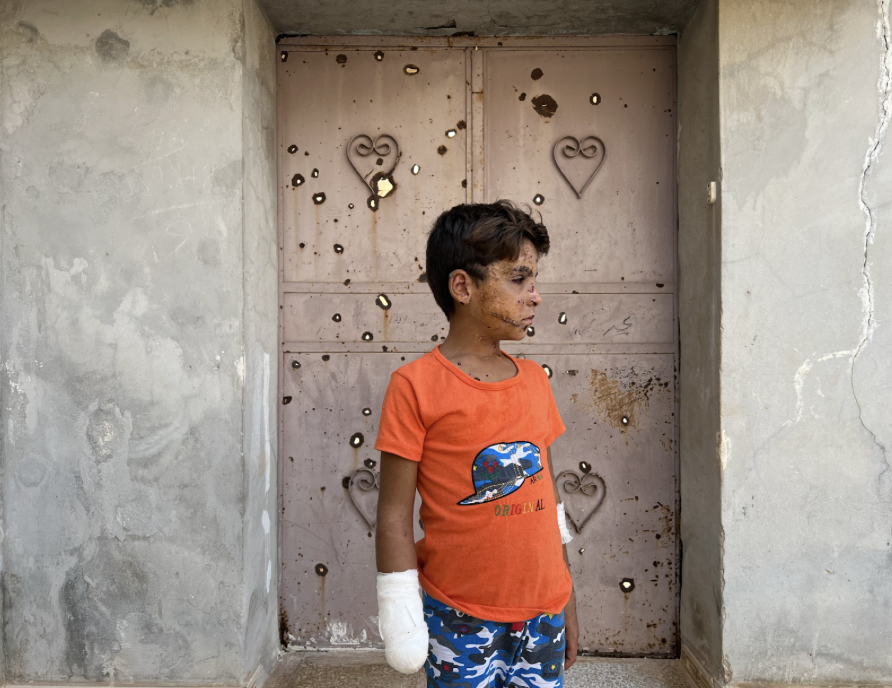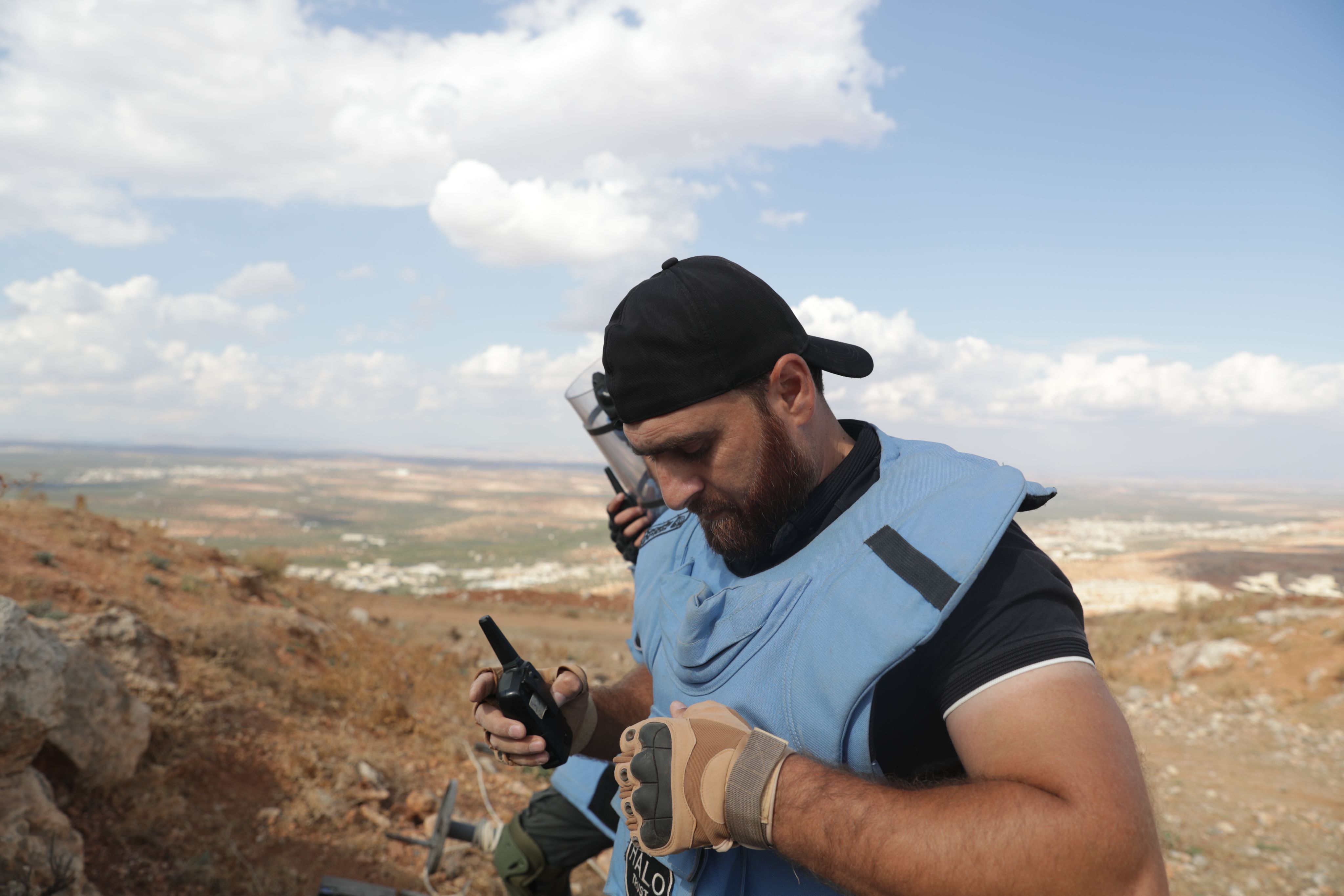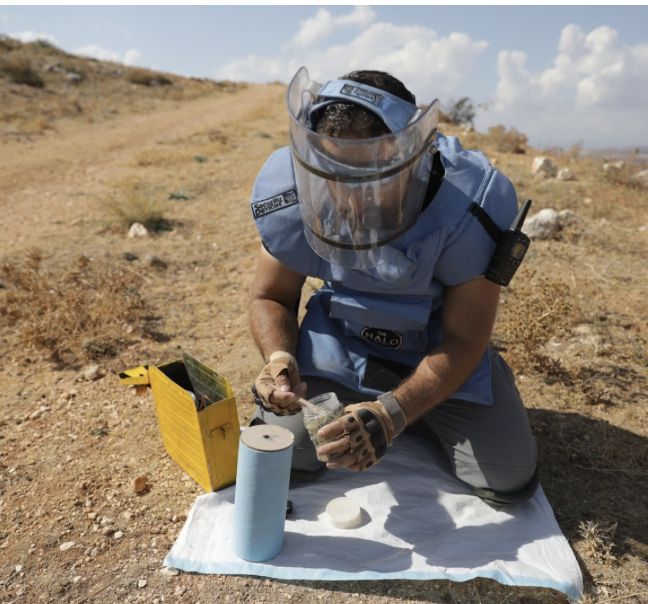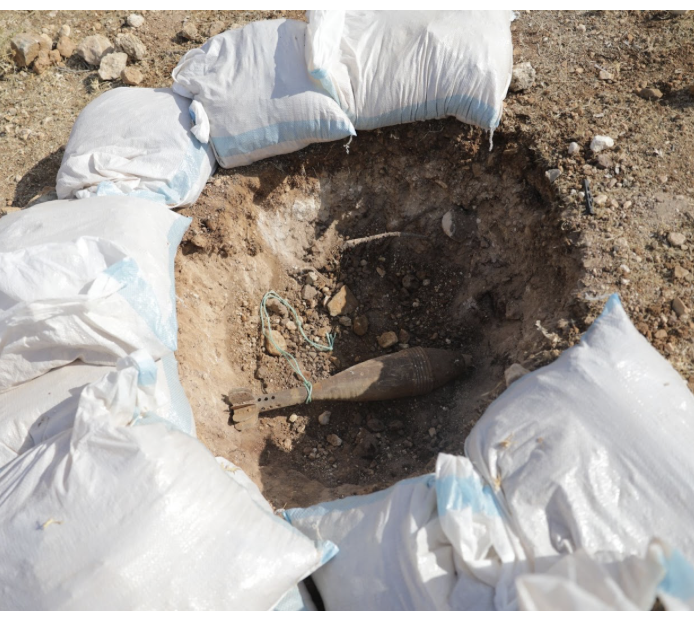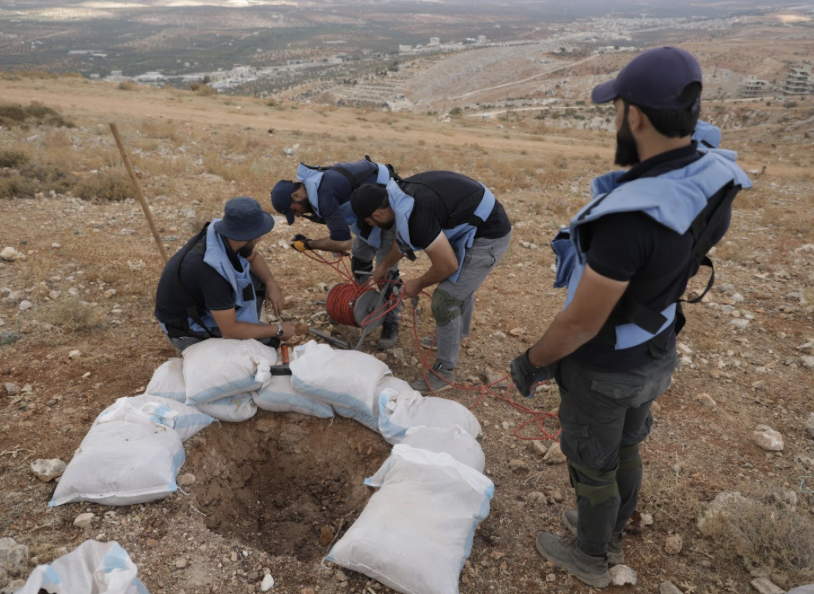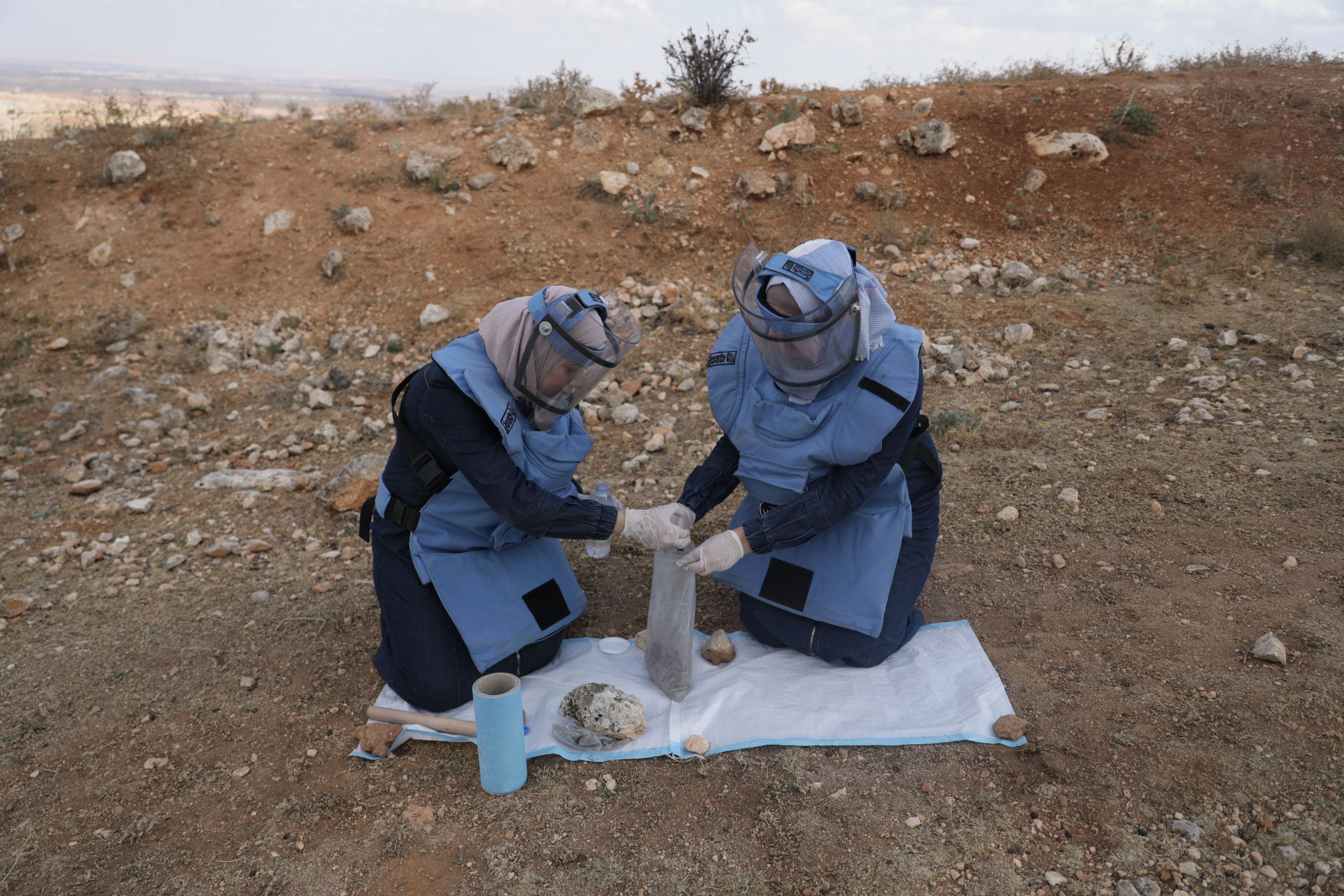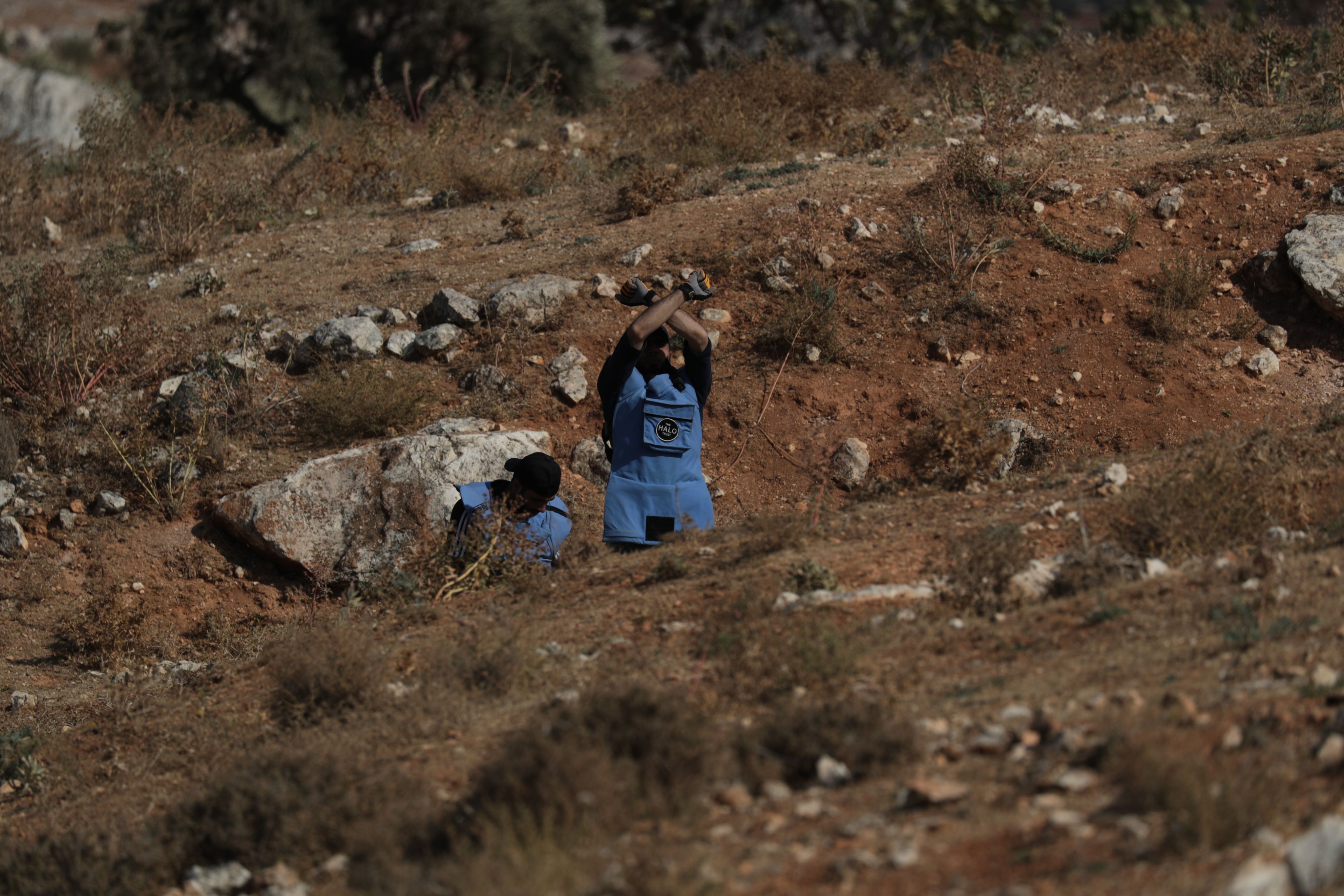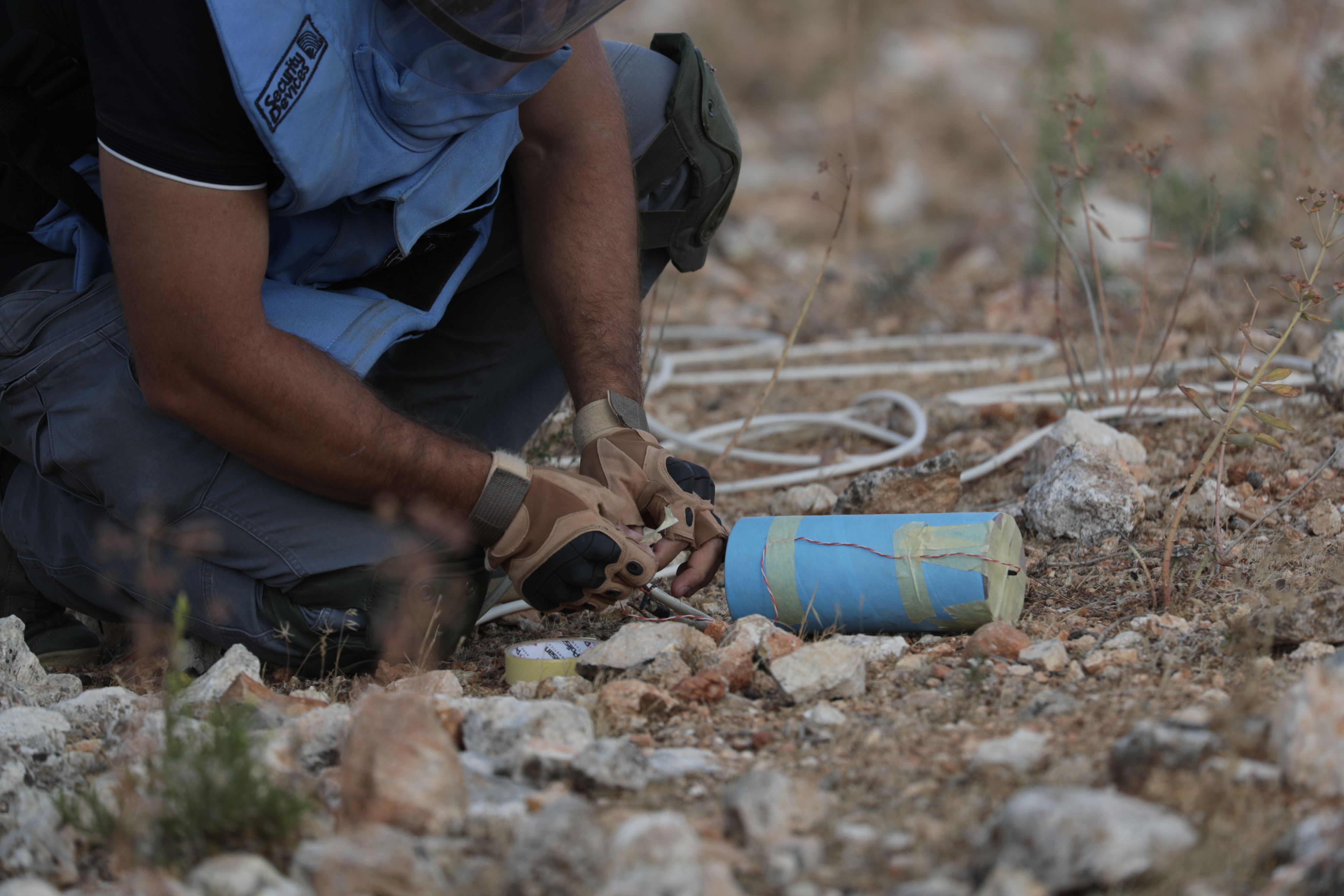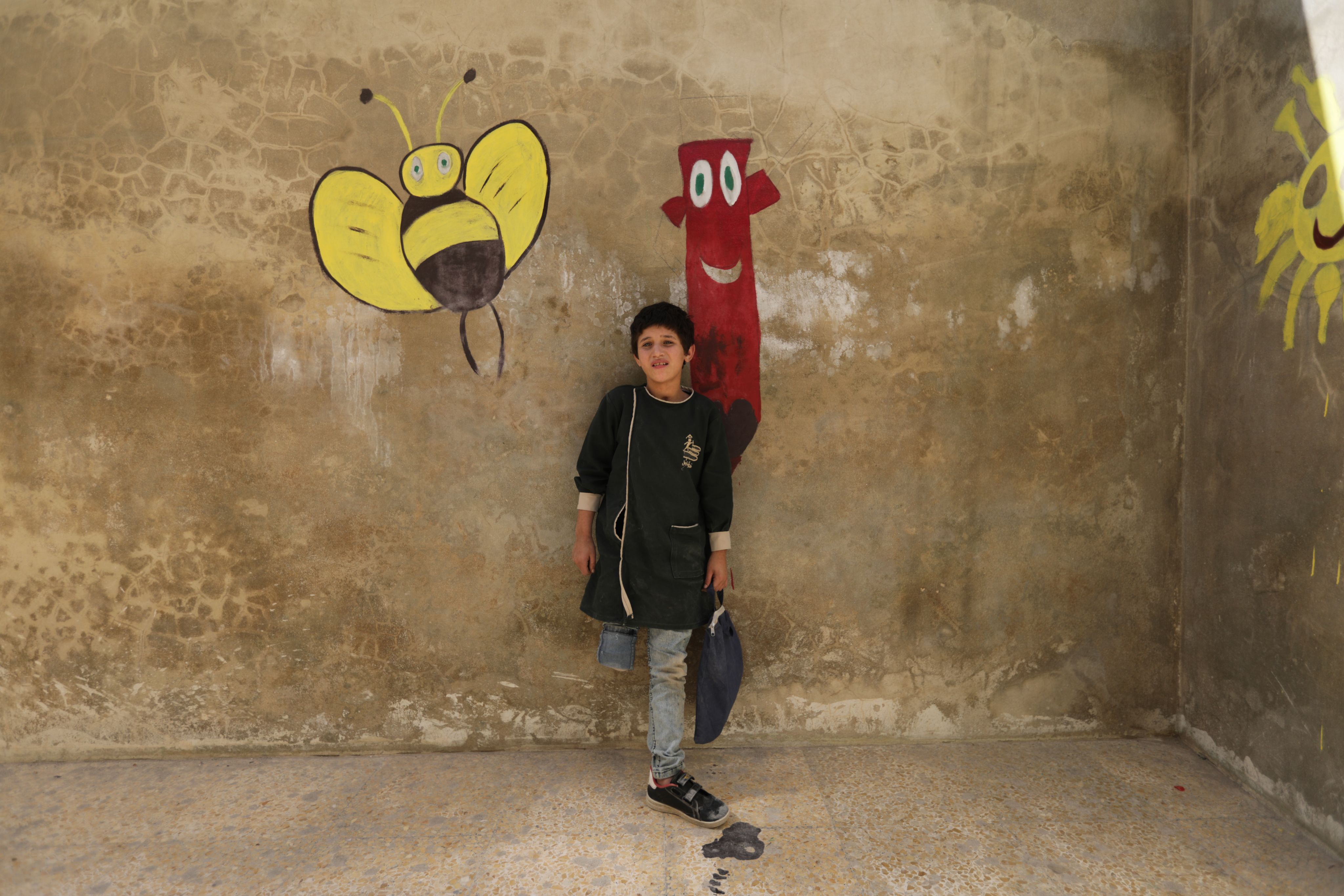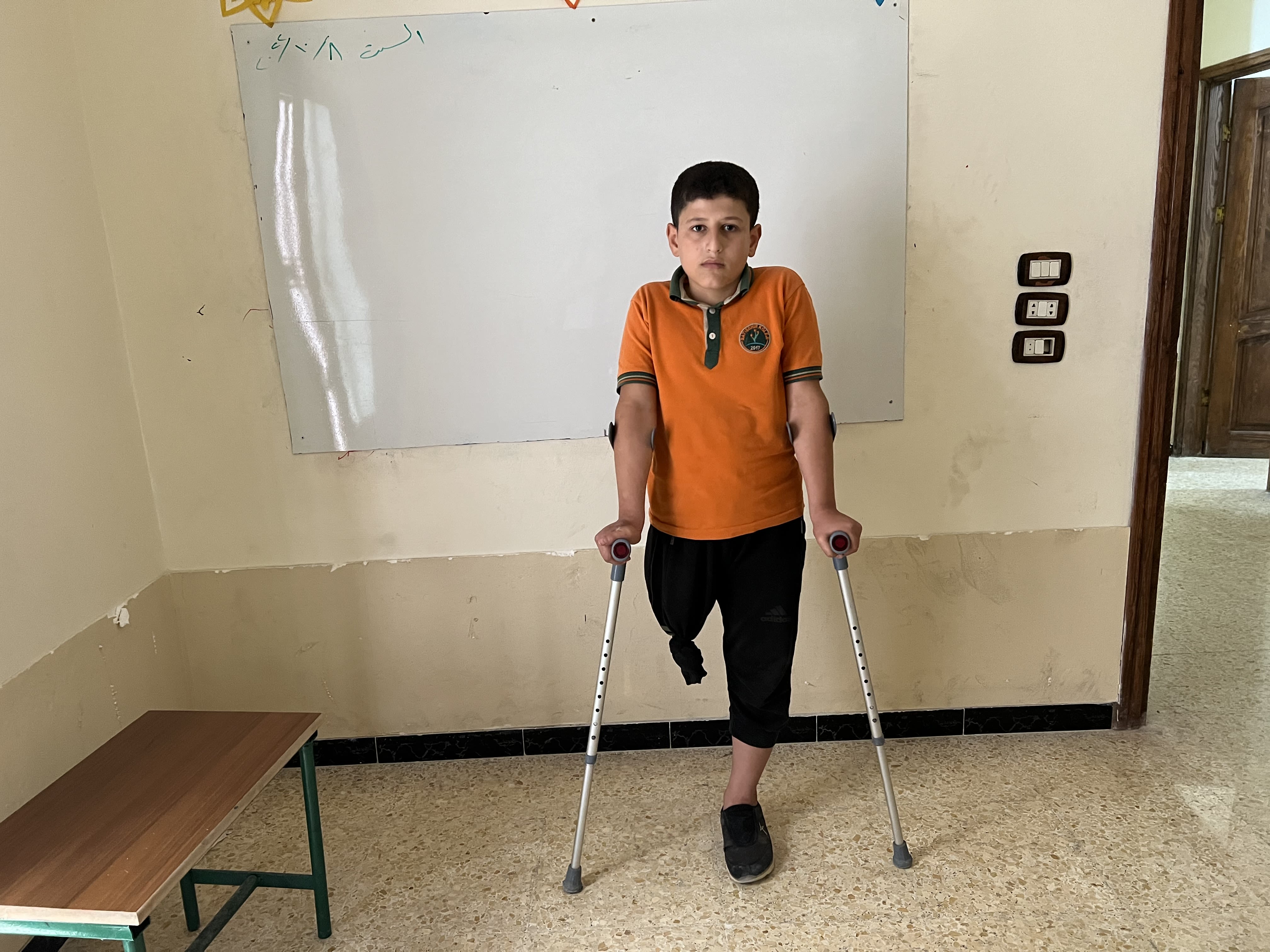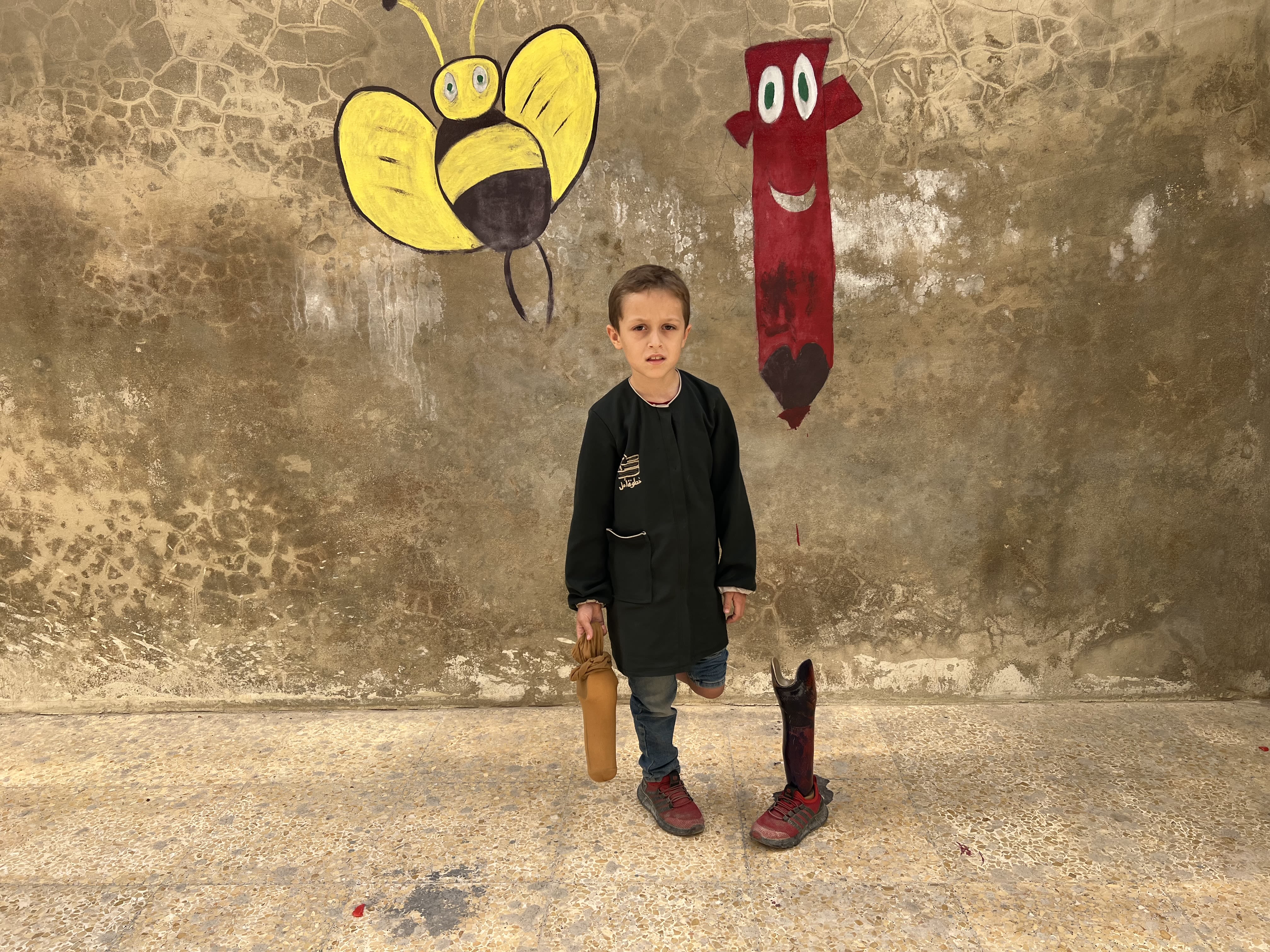Children Affected by Unexploded Ordnance
In Syria, one-third of the population lives in communities contaminated by unexploded ordnance
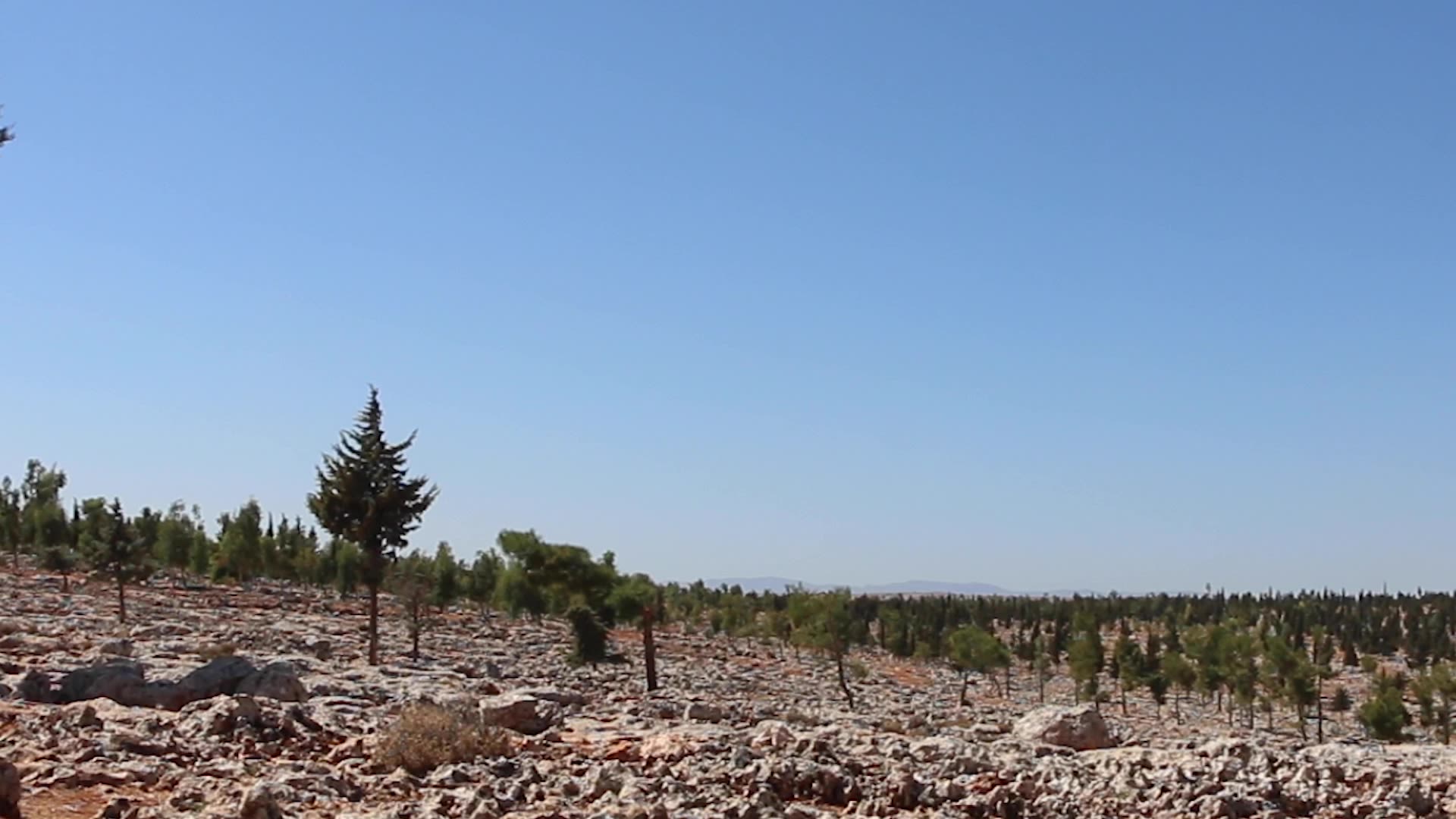
It would have been like any other morning for the child Ibrahim, who would take the sheep to graze in an area near their home in northwestern Syria. Ibrahim is one of over two million children in the country who have left school to work due to the impacts of war and the dire economic situation.
But it was not an ordinary day; a piece of metal that caught his attention changed his life forever.
Ibrahim after the injury incident.
Ibrahim after the injury incident.
It was not the first time Ibrahim had come across this piece of metal; in fact, he had played with it for the past two days. But today was different—this was no ordinary piece of iron; it was an "unexploded ordnance." After two days of playing with it and moving it around, it exploded in the hands of this 11-year-old boy, resulting in the loss of his hand and leaving visible scars on his face and body.
The piece he found on the side of the road is a remnant of the ongoing war in the country, which has persisted for 13 years. It is one of thousands of unexploded ordnance scattered across various regions of Syria, particularly in areas that have suffered intense bombardment.
Ibrahim remembers exactly what happened to him; he did not lose consciousness from the explosion. He recalls the sounds around him as he was rushed to a hospital in the town of Binnish, near Idlib, which is under the control of the Syrian opposition.
He lost consciousness in the operating room, and when he woke up, he discovered that he had lost his hand.
Ibrahim tells us, "To this moment, I still feel like my hand is there. This is my right hand, which I used for writing."
60 types of unexploded ordnance

The highest number of casualties in Syria
An annual report by the Landmine Monitor (Mine Action Review) revealed that Syria recorded, for the third consecutive year, the highest number of casualties due to unexploded remnants of war. The report documented 834 casualties across Syria in 2022 and the first half of 2023.
Unexploded ordnance are devices that have failed to detonate; they may never explode or could go off at any moment, making it impossible to assess their impact and danger to the surrounding area. Over the past years, Syrian civil defense teams have documented the use of more than 60 different types of munitions by the Assad regime and Russia in killing civilians, including 11 types of internationally banned cluster bombs.
In the first quarter of 2024, the Unexploded Ordnance (UXO) removal teams of the White Helmets conducted 301 non-technical surveys and identified 88 areas contaminated with remnants of war. During this period, they disposed of 189 pieces of war remnants, including 44 cluster bombs, 34 conventional bombs, and 31 rockets.
These remnants have fallen in various areas of Syria, including the land where Ibrahim grazes his sheep. Children are the most at risk due to their ignorance of the dangers and their tendency to play with these objects.
11 types of these bombs are internationally banned.
Removing and disposing of remnants of war in all their forms requires expertise and trained teams, as any mistake in this process can be fatal.
In Syria, specifically in northwestern Syria, we met with Hussein Ali from Halo Trust, an organization specialized in mine clearance. He explained that the organization began its work in Syria in 2015, focusing on raising awareness about the different types of unexploded ordnance. In 2022, they commenced operations for their removal and disposal.
Husain Alali
Husain Alali
Tiny Hand accompanied Halo Trust on a mission to dispose of a piece of unexploded ordnance. Hussein stated, "We received information about the presence of a cluster munition, and we are here today to eliminate it. We have previously disposed of other remnants of war, such as mortars and hand grenades."
First, they follow very precise standard procedures that are pre-planned. They dig a pit if the ordnance is large, then surround the pit with sandbags and add a protective ring based on the size of the ordnance. All pathways in the area are closed off during the disposal process to protect civilians while eliminating these remnants.
The organization also educates local residents about the shapes and types of war remnants, as well as how to report them and ways to handle them safely.
The primary goal of their work is to protect civilians and reduce the spread of war remnants. Hussein says, "Many incidents occur with children, leading to amputations because they play with these objects, which can explode in their hands."
The organization has dealt with approximately 32 remnants of various types.
The most important advice Hussein gives to civilians in the area is, "If you encounter any war remnants or unfamiliar objects, stay away from them and report them immediately to the relevant authorities or local officials. Avoid tampering with them altogether."
In Syria, one-third of the population lives in communities contaminated by unexploded ordnance
In 2024, the Carter Center estimated that more than 324,600 unexploded rockets and bombs are scattered throughout Syria, leaving civilians vulnerable to death and injury years after the fighting has ended. The World Health Organization estimates that 15 percent of the population lives with disabilities resulting from the conflict.
15 percent of the population lives with disabilities resulting from the conflict.
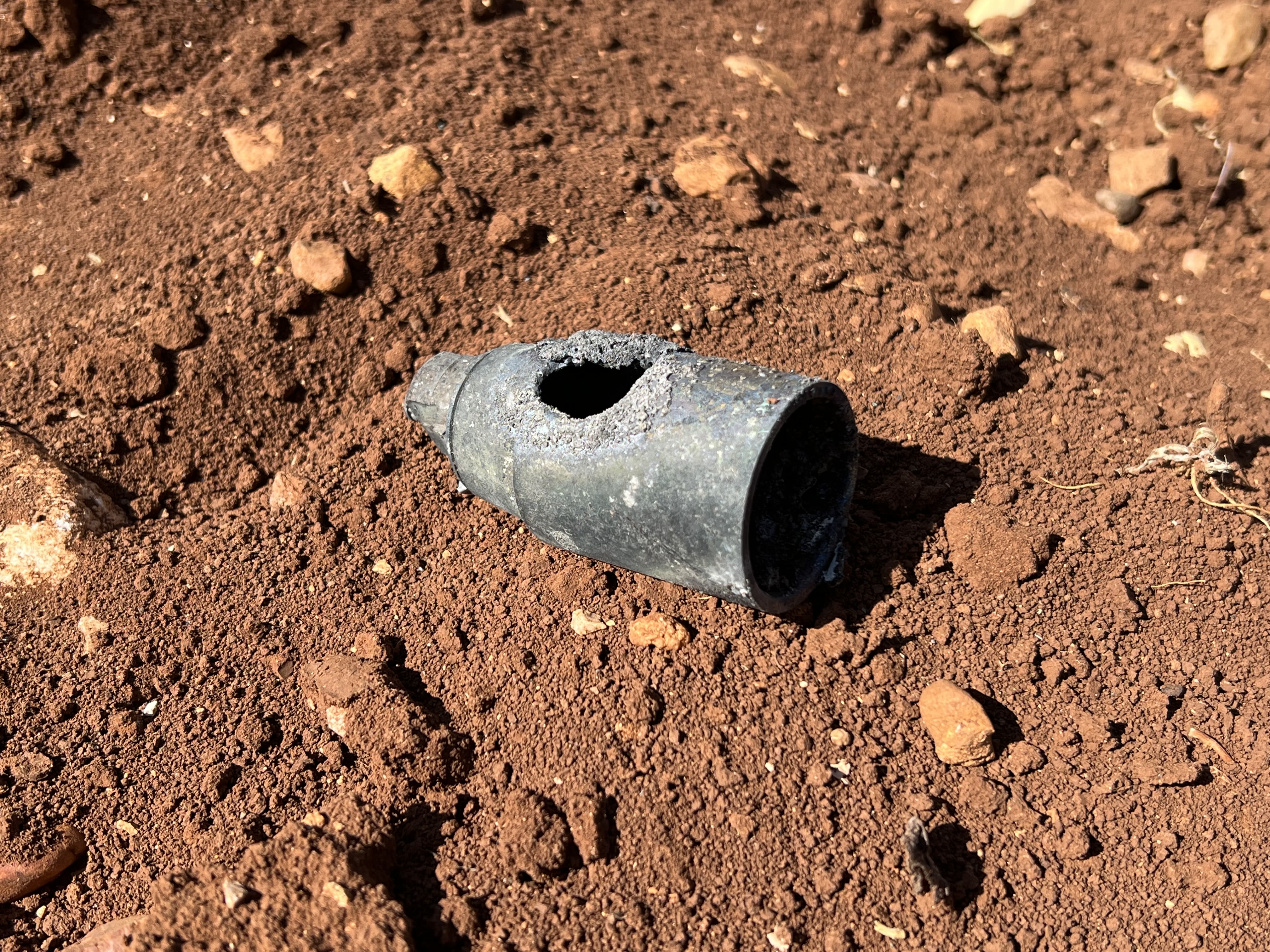
Ahmad
Ahmad
Mohammad
Mohammad
Most child victims of unexploded ordnance in Syria are male; according to statistics, 80% of the victims are boys. Data indicates that the level of risk varies based on the child's age, gender, and location.
8 out of 10 child victims are male, with early adolescence (ages 12-15) being the most at-risk age group for boys. For girls, the highest incidence of casualties occurs between the ages of 6 and 11.
Children face threats while playing, such as confusing unexploded ordnance with toys, and they are often unaware of the dangers involved.
On average, 9 children were reported killed or injured each month due to explosive remnants between March 2011 and December 2019.
The appeal of the interesting shapes and colors of unexploded ordnance to children is a problem. According to data, 40% of all recorded injuries among children occurred while playing, including inadvertently interacting with explosive items. Among the most common activities, going to school is also noted as a frequent context for these incidents.
Children are at risk while scavenging for waste to sell and working in agricultural fields. According to the data, 20% of all recorded injuries among children occurred during farming activities.
Below are videos showcasing some types of unexploded ordnance:
Aerial bombardment
Mohammed, an 8-year-old from Idlib, lost his leg due to aerial bombardment. He was 4 years old when he lost his limb and does not remember the details of the incident.
At the rehabilitation center, we also met Ahmed from Hama, who was injured in an airstrike and lost his leg. He tells us, "I don't remember the day the plane bombed and I lost my leg. I was out buying things, and I didn’t realize what was happening until the aircraft struck. Those who could escape survived, but I remained and lost my leg."
20% of all recorded injuries among children occurred during farming activities
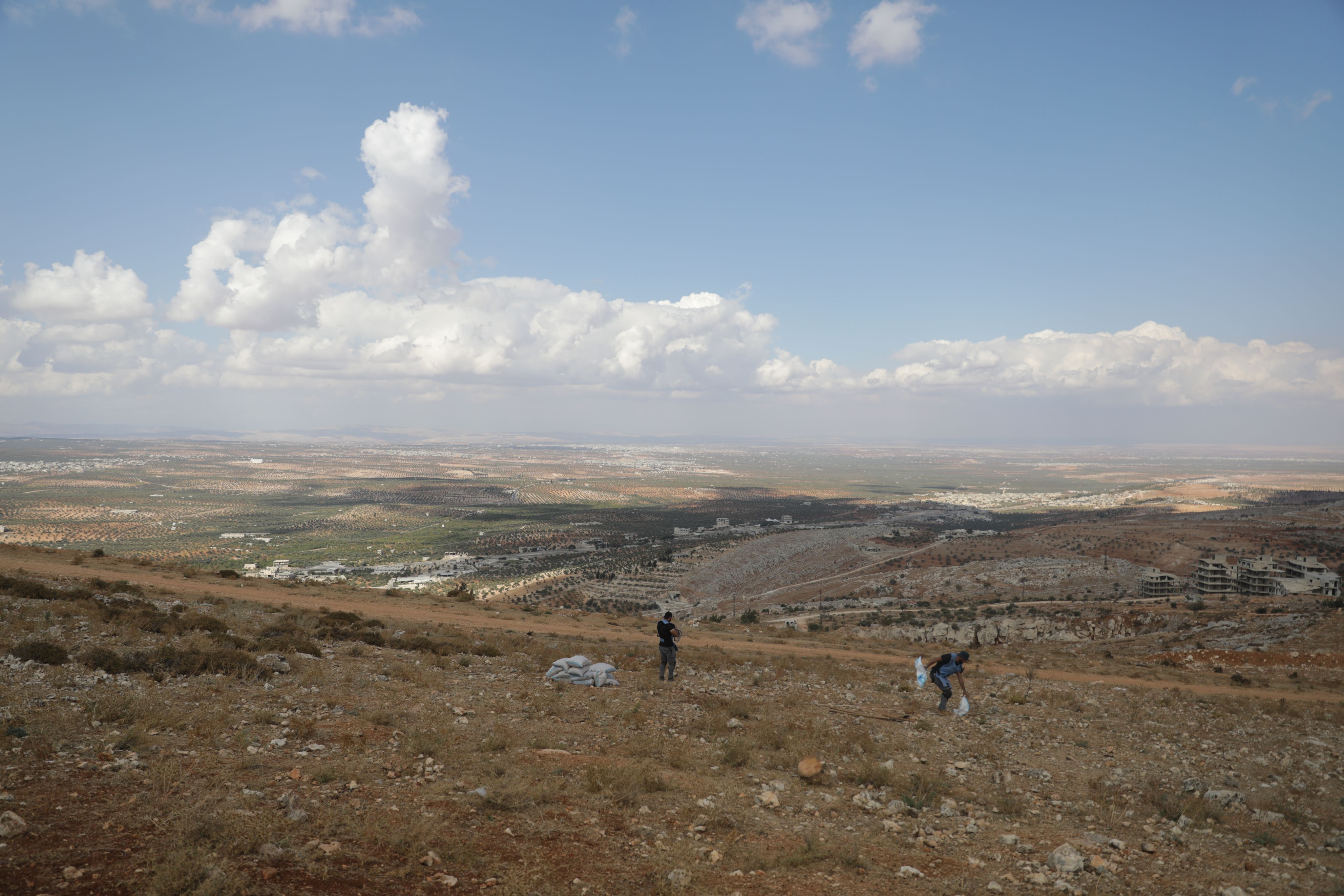
On December 8, 2005, the General Assembly declared April 4 of each year to be celebrated as the International Day for Mine Awareness and Assistance in Mine Action.
According to the United Nations, landmines, unexploded remnants of war, and explosive devices continue to cause deaths and injuries. Every hour, one person is killed or injured by these explosive devices, resulting in numerous child victims.
If you have virtual reality glasses, put them on and watch this story with the UXO team as they undertake a dangerous mission to dispose of unexploded ordnance. The team leader states, "The first mistake is the last; here, there is no room for hesitation or error, and experience is the key to their success in this mission."
